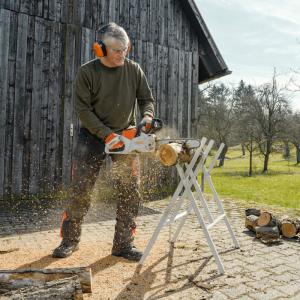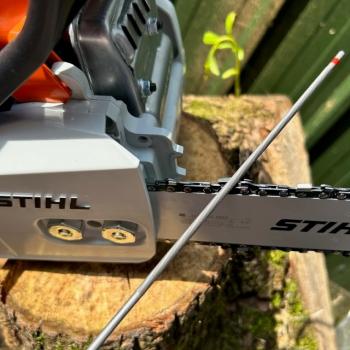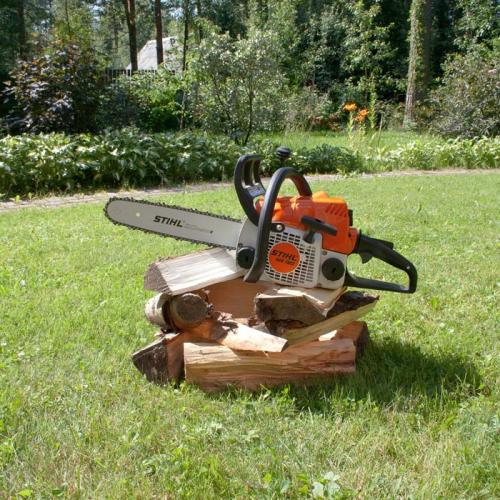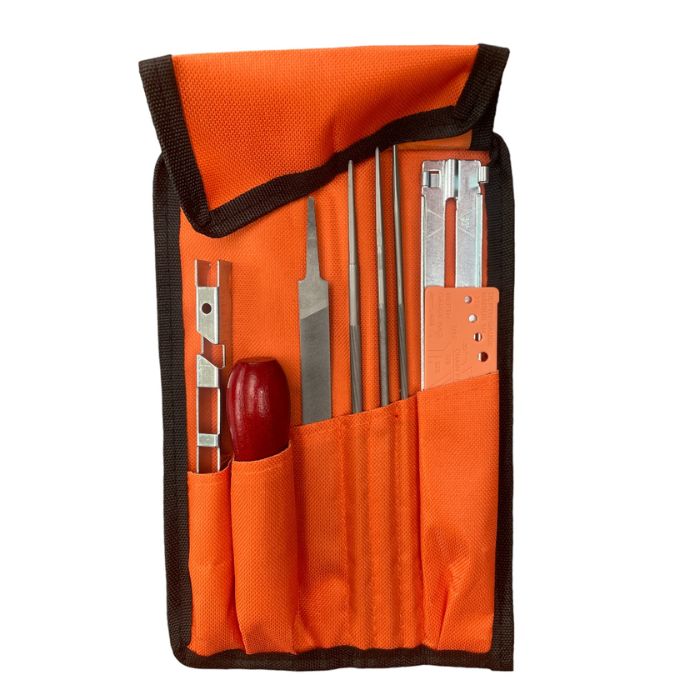How to Operate a Chainsaw Safely: A Starters Guide

How to Use a Chainsaw Safely: A Beginner's Guide
Chainsaws are powerful machines that can be used for a variety of purposes, but misuse can be unsafe. This guide will teach you the fundamentals of chainsaw safety so you can use your chainsaw effectively and safely.
Before You Begin
Before using your chainsaw, there are a number of precautions you must take to ensure your safety. First, you must ensure that you are wearing the appropriate safety equipment. This should consist of:
- A hard hat with a visor & Earmuffs (Shop with us HERE)
- Safety glasses
- Chainsaw Gloves (Shop with us HERE)
- Chainsaw Trousers (Shop with us HERE)
- Chainsaw Boots (Shop with us HERE)
You should also ensure that there are no persons, pets or objects in the area where you will be using the chainsaw. Additionally, it is recommended that you inform someone of your location and approximate working hours. Just in case, keep a phone and a first aid kit close to the working area. Once these precautions have been taken, you can begin preparing your chainsaw for use.
Readying Your Chainsaw
Before you start using your chainsaw, you need to make sure that it is properly prepared. This includes:
- Checking the chain tension & adjusting if needed.
- Making sure the chain is sharp.
- Holding the chainsaw properly.
Checking the Chain Tension
The chain tension is important because it effects the chainsaw's cutting performance. If the chain is too loose, it can detach from the bar and cause injury. Too much tension on the chain can harm the chainsaw. To double-check the chain tension, perform the following:
- Turn off the chainsaw and let it cool down properly.
- Place the chainsaw on a flat surface.
- Hold the bar with one hand and the chain with the other.
- Check the tension of the chainsaw by pulling the chain off of the bar. It should still be tight and "snap" back onto the bar. You should only be able to pull off 1 or 2 drivelinks from the chainsaw bar.
- Adjust the chain tension as needed.

Sharpening the Chain
A worn chain will not cut as effectively and is potentially more hazardous to use. To sharpen the chain, a chainsaw sharpening file is required. Use the following methods to sharpen your chain:
- Turn off the chainsaw and let it cool down.
- TOP TIP: Use a marker pen to mark the first tooth you sharpen. This helps remember the starting point.
- File the chain in the direction of the cutting teeth.
- File each tooth until it is sharp.
- Rotate the chain manually to make sure you sharpen every cutting tooth.

Gripping the Chainsaw Properly
How you hold the chainsaw is crucial for safety. The chainsaw should always be held with both palms. A saw should be held with the left hand on the upper handle and the right hand on the rear trigger handle. This keeps the chainsaw bar and chain away from the user's body while in use.

Operating the Chainsaw
After preparing your chainsaw, you can begin using it. Here are some safety guidelines for chainsaw operation:
- Always use the correct Personal Protective Equipment (PPE).
- Ensure that the area where you intend to use the chainsaw is free of people, animals, and objects.
- Utilise the chainsaw for its intended function.
- If the chainsaw is damaged, you should not use it.
- Observe your surroundings.
- Maintain your chainsaw's edge.
- Take breaks often.
Chainsaws are sharp and potentially hazardous equipment if not used properly. By adhering to the safety advice in this guide, you can ensure that your chainsaw is used safely and effectively. To shop our range of chainsaws, click HERE.


